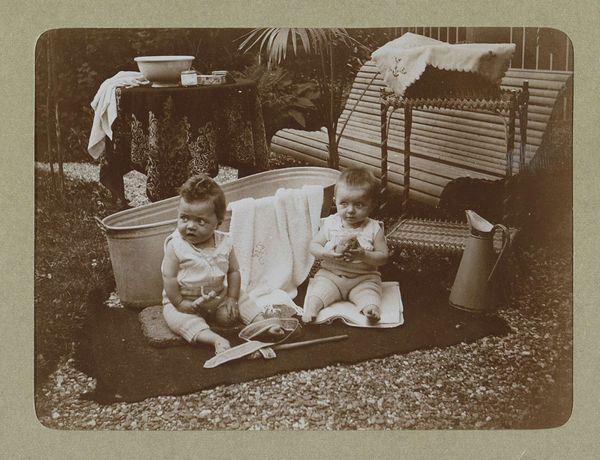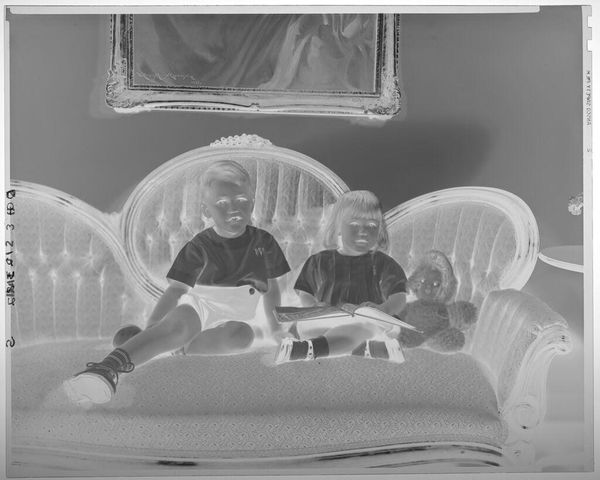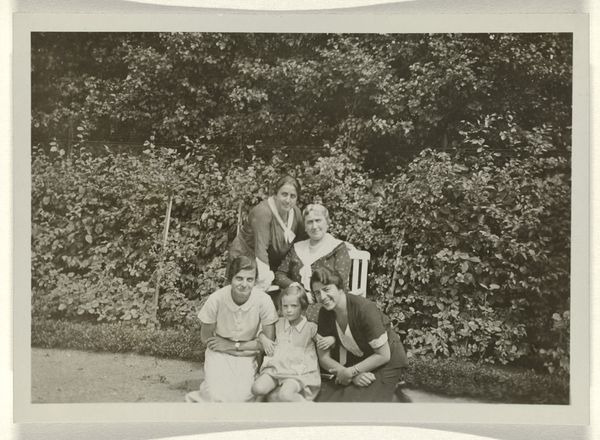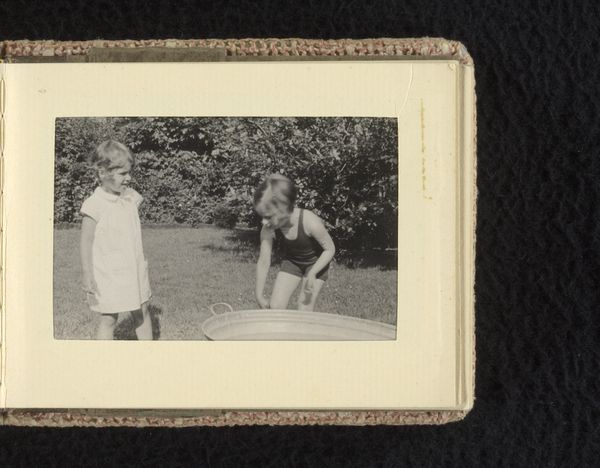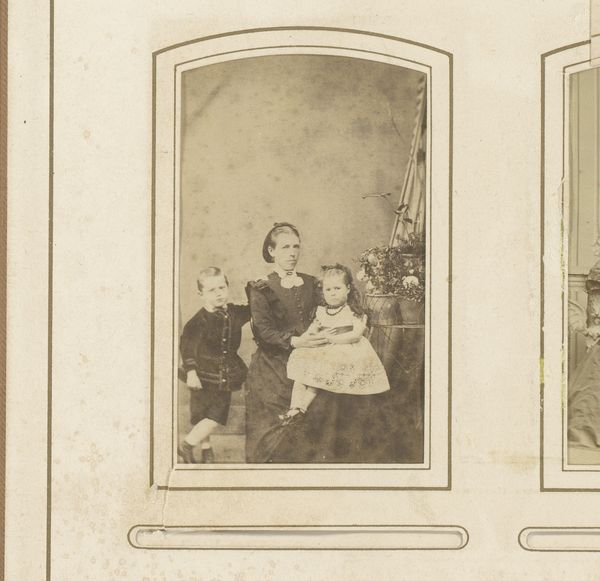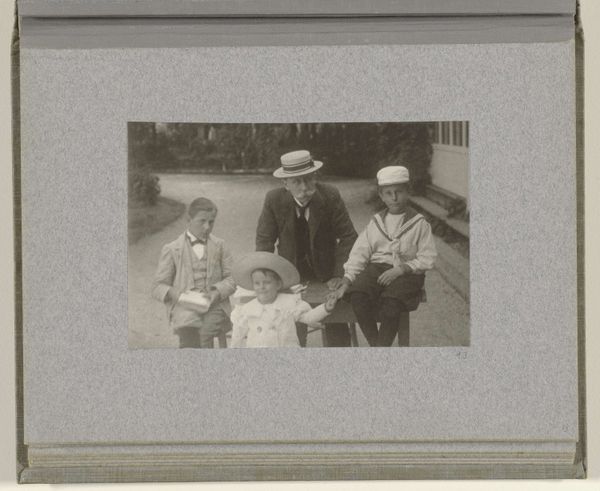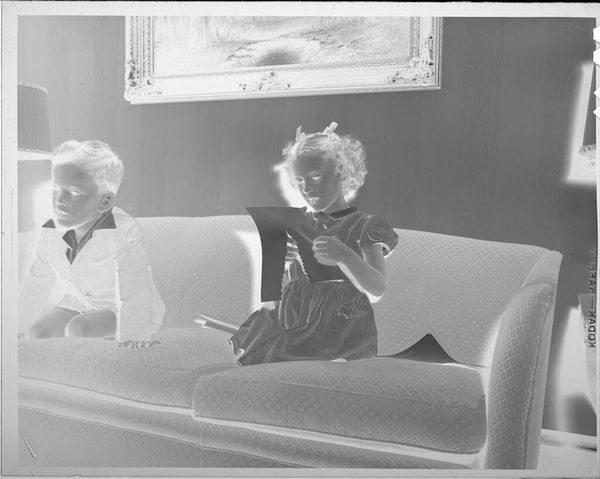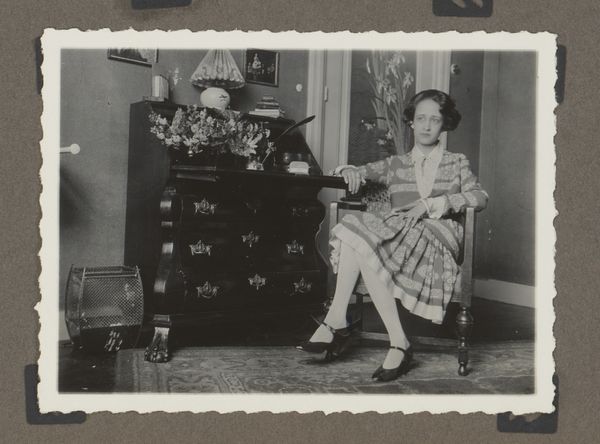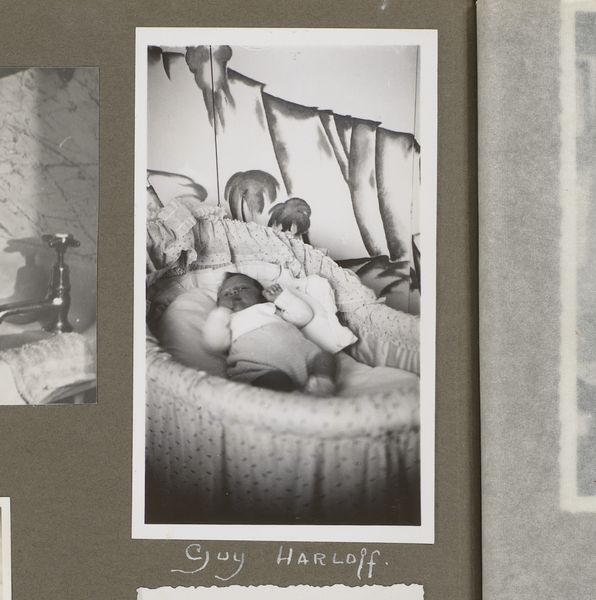
photography
#
portrait
#
photography
#
genre-painting
#
realism
Dimensions: height 65 mm, width 106 mm
Copyright: Rijks Museum: Open Domain
Curator: This photograph, taken in 1923, is titled "Klaas en Tiny Kleiterp en baby Pieteke op een bank in Tjimahi." It appears to be a family portrait of three children sitting on an ornate bench outdoors. What are your initial thoughts? Editor: The materiality speaks to me first. That ornate wicker bench – it feels so typical of colonial-era photography, a kind of artificial staging amidst what I imagine was very different lived experience. There’s a starkness in its presentation, almost like an artifact under glass. Curator: Interesting point about the staging. Wicker does often appear in these colonial photos. Focusing on the figures, notice how their gestures hold meaning. The central baby, Pieteke, holds the hand of the boy to the right, potentially symbolizing kinship, connection, and dependence but, possibly, the other way round too: protection of the younger one. Editor: Exactly. It's crucial to acknowledge the photograph's purpose, the cultural codes it was created with. This is likely intended as a message for the relatives back in Europe: The children, objects, and clothing signify a particular version of colonial success, yet also hints to exploitation. Curator: Colonial imagery, indeed. Consider, though, that these family photographs would often be among the very few visual representations of their lives to be sent back to the Netherlands. The details, perhaps even the specific garments worn, might take on special significance as representations of the lives lived so far away. It serves as an extension of memory, holding significant sentimental worth for those depicted, and their relations so far away. Editor: Sure. It’s important to acknowledge both the domestic function of the image, the texture of family life preserved, along with its colonial underpinnings in the global circulation of imagery. The production itself contributes to maintaining a power structure: photography used as a method of portraying ownership and authority. Curator: Agreed. When considering that "realism" is a tag often associated with portrait photography like this, we should remember what definition of "real" it actually presents. As with any depiction, there is selective inclusion and erasure of meanings that makes each still a document of intention, power, and affect. Editor: Absolutely. Ultimately, this image offers an entry point into thinking about the material realities and the representational strategies at play within a specific colonial history. Curator: Precisely. The layering of domestic imagery with power dynamics truly expands how one might regard photography as both document and as carefully-woven artifact.
Comments
No comments
Be the first to comment and join the conversation on the ultimate creative platform.
